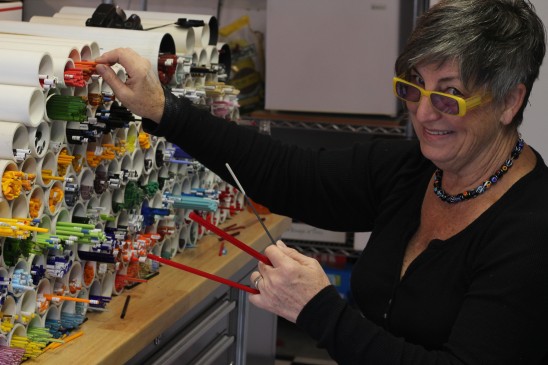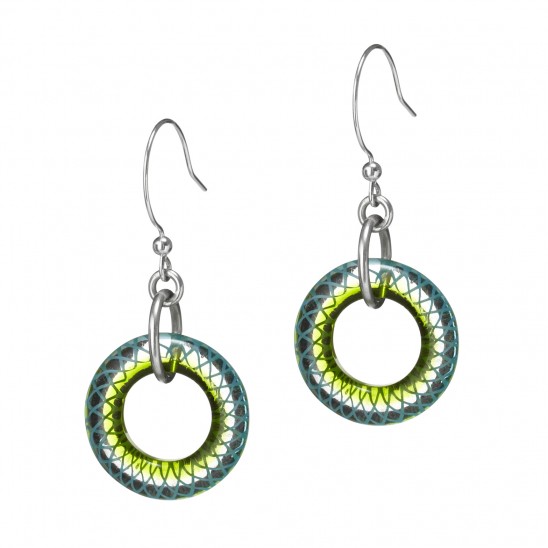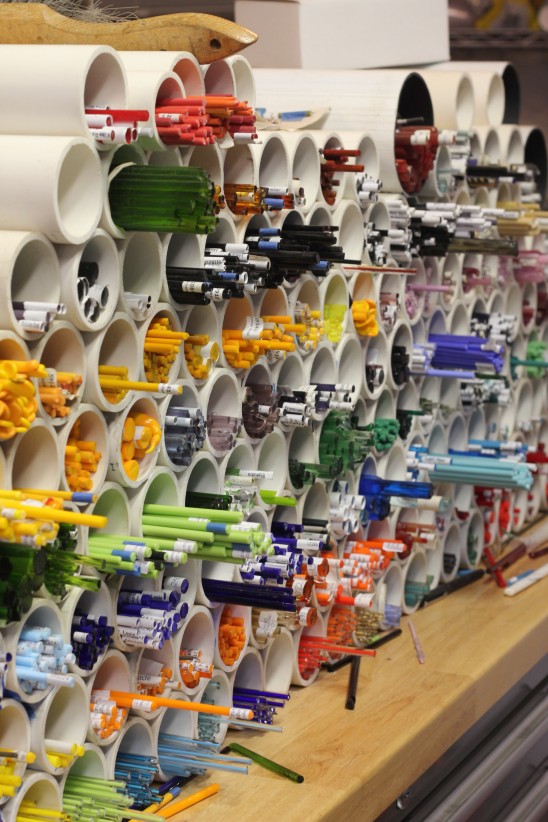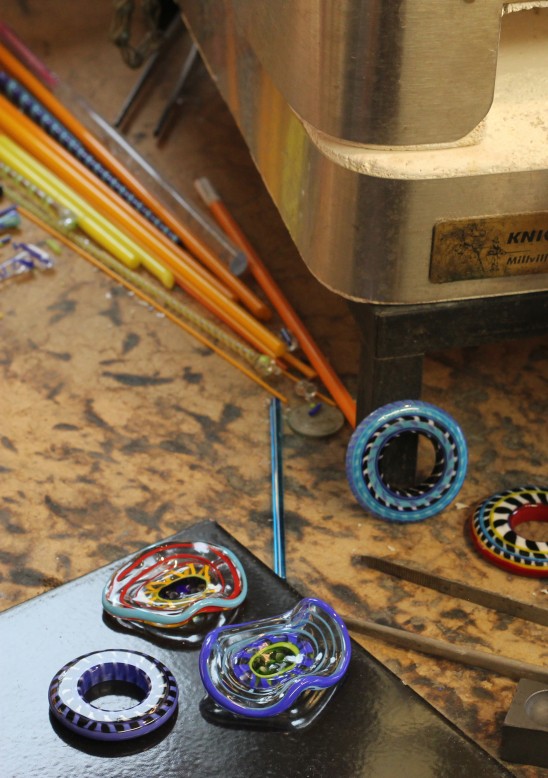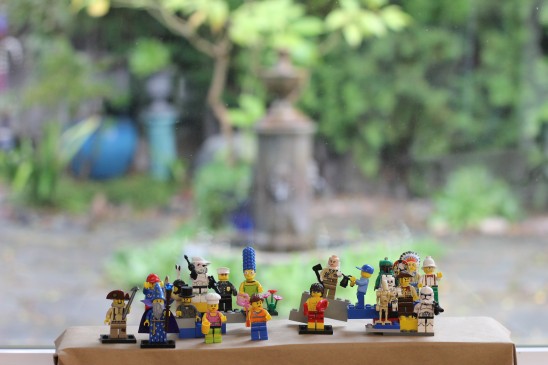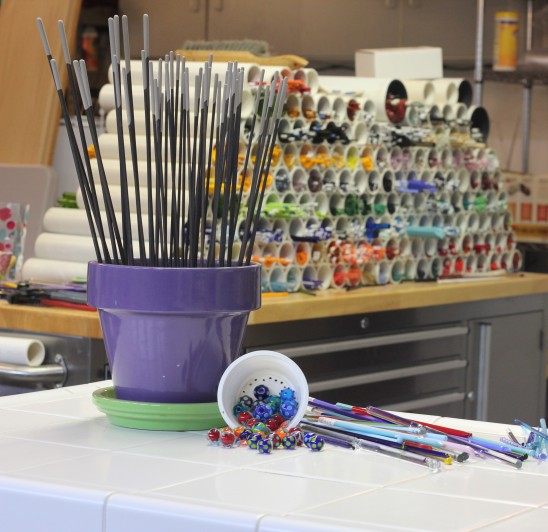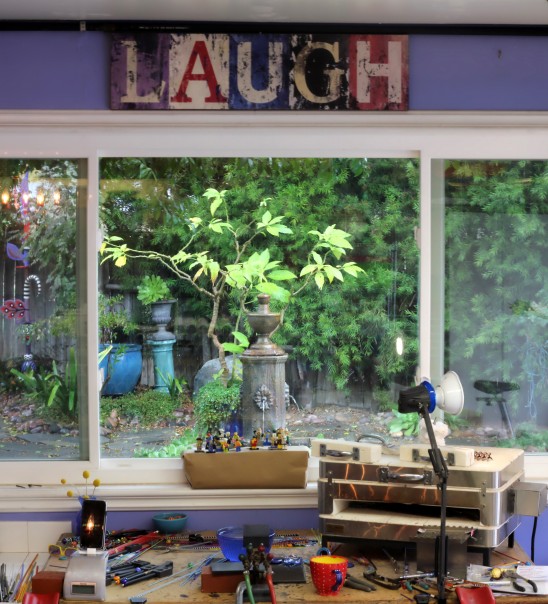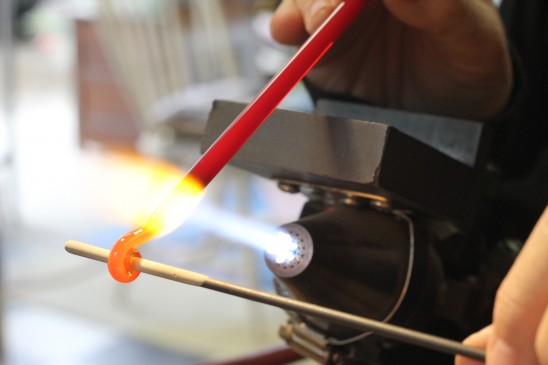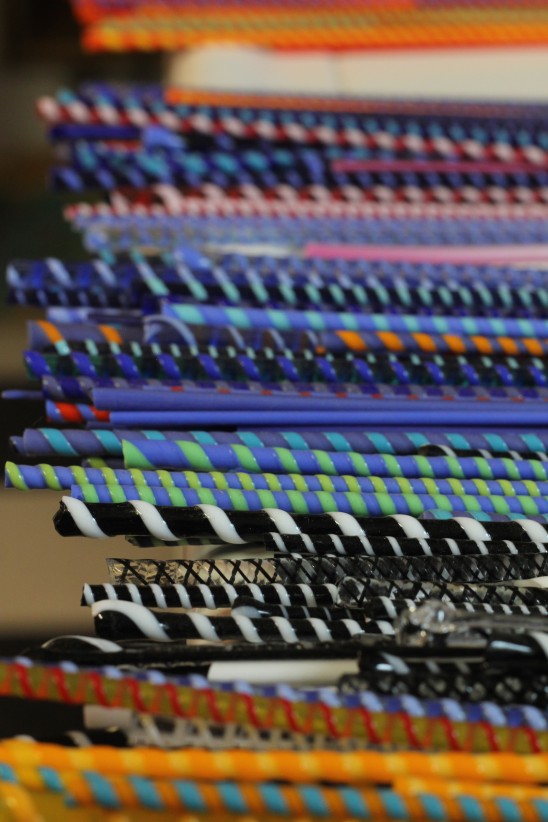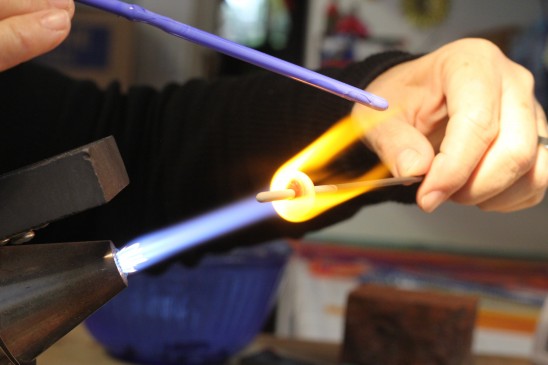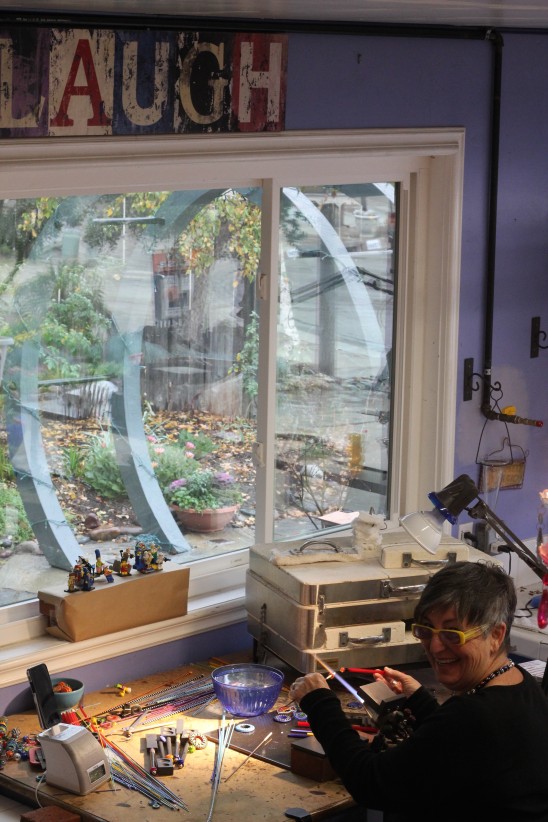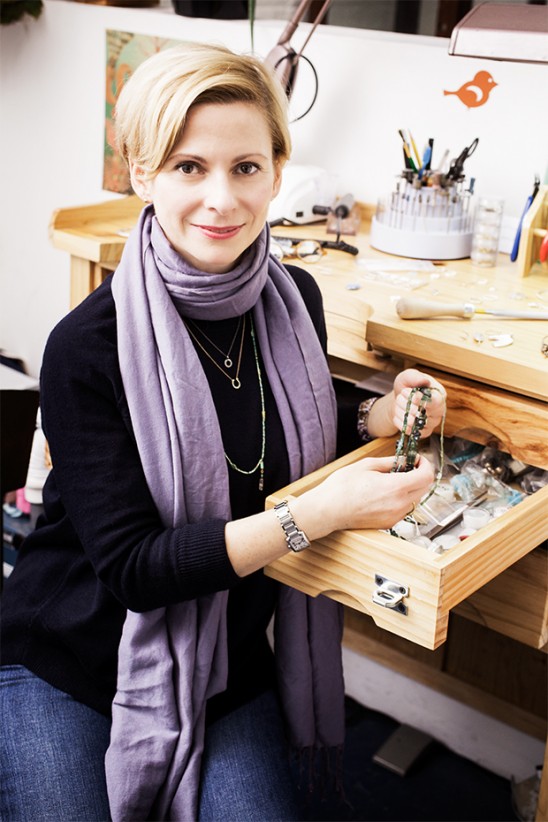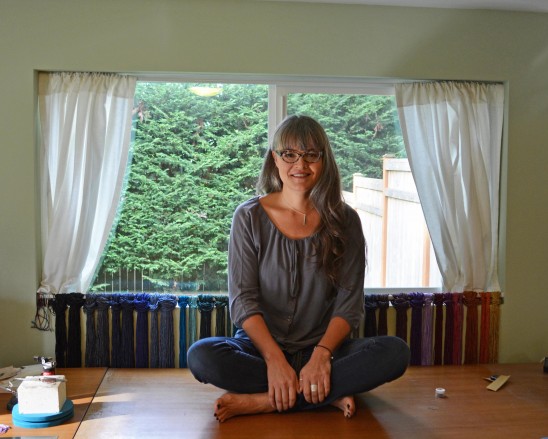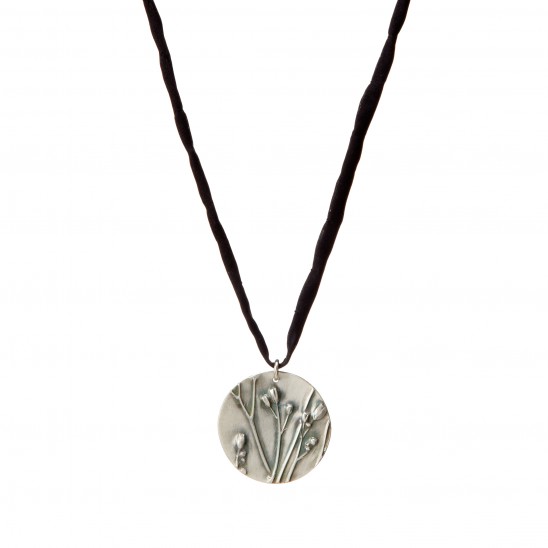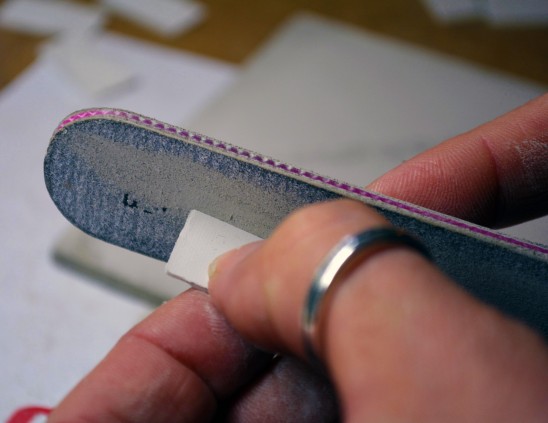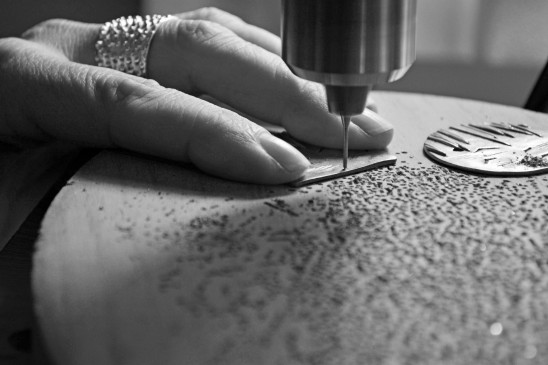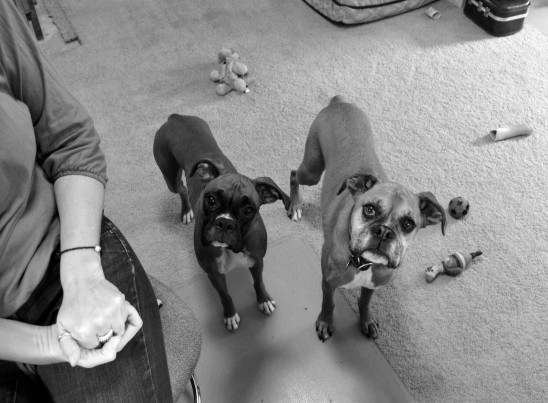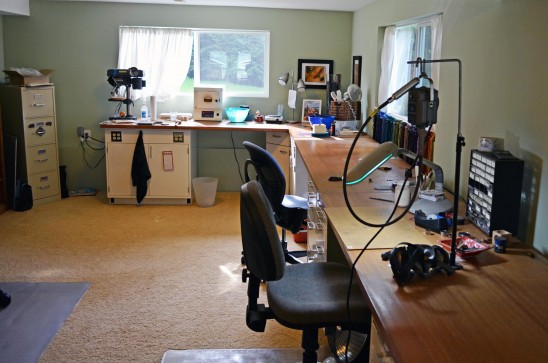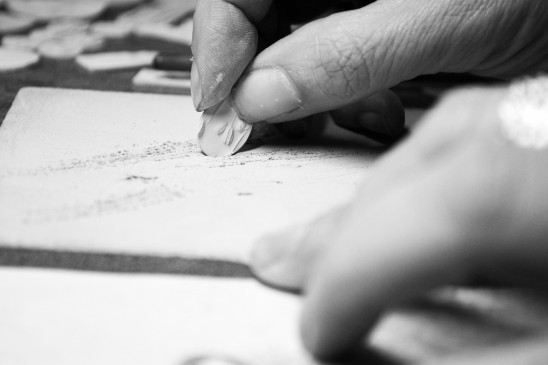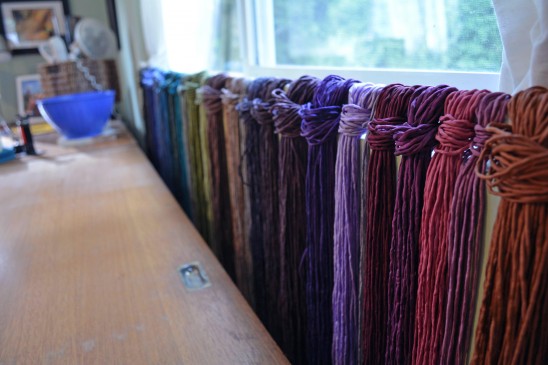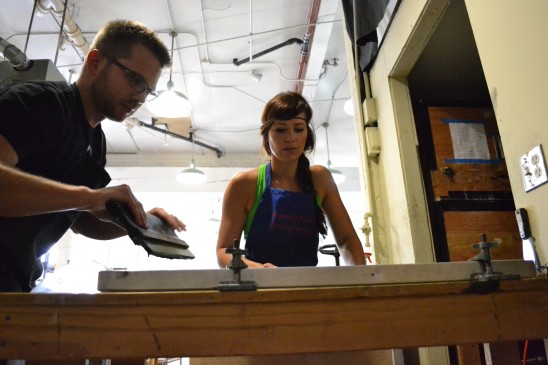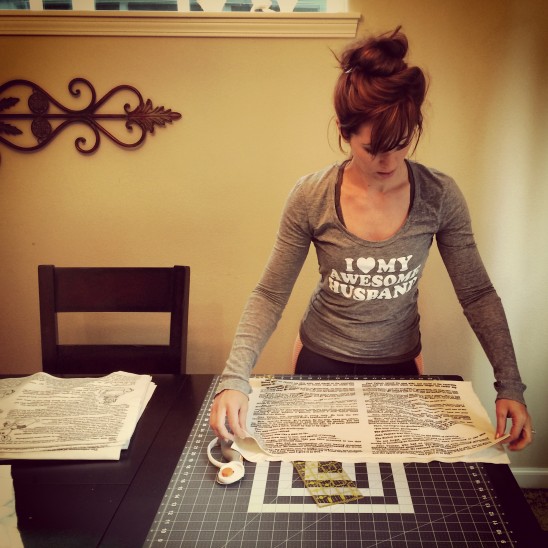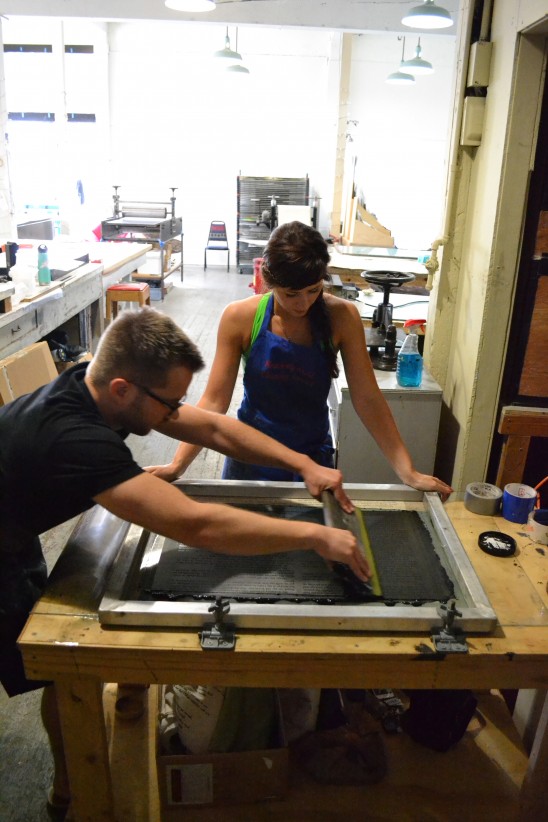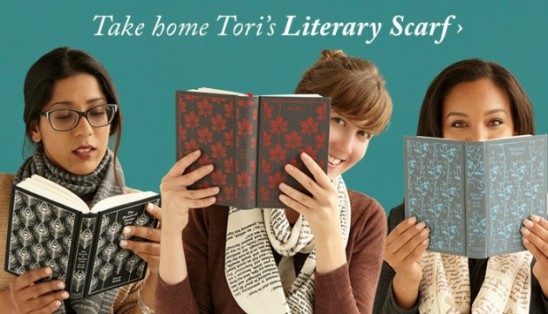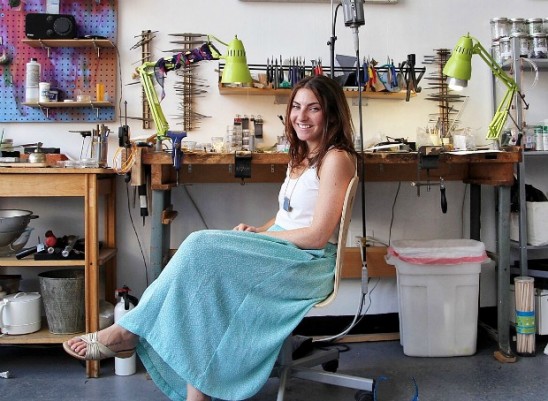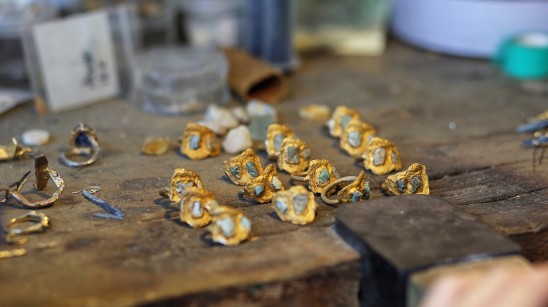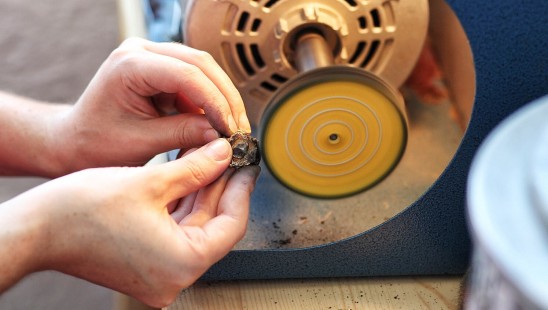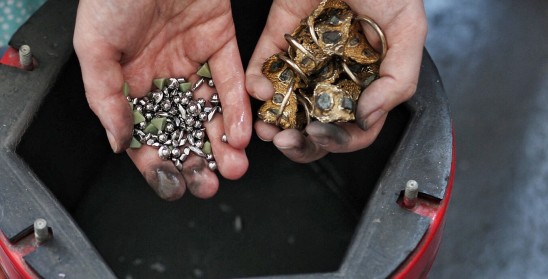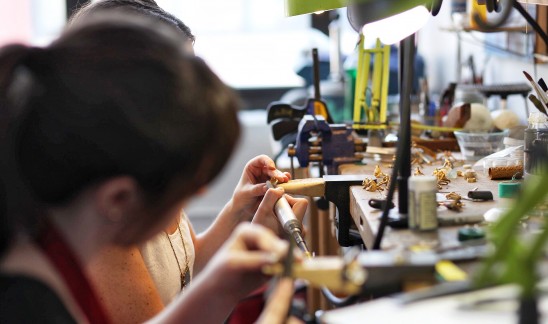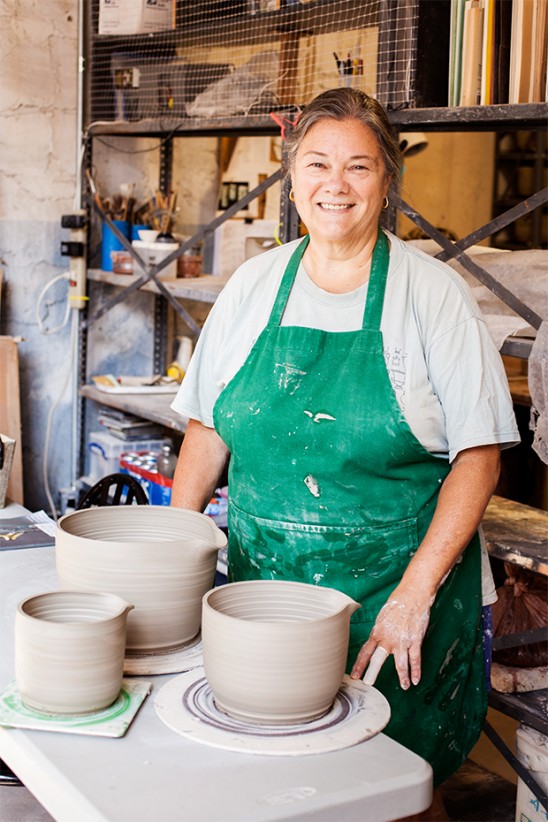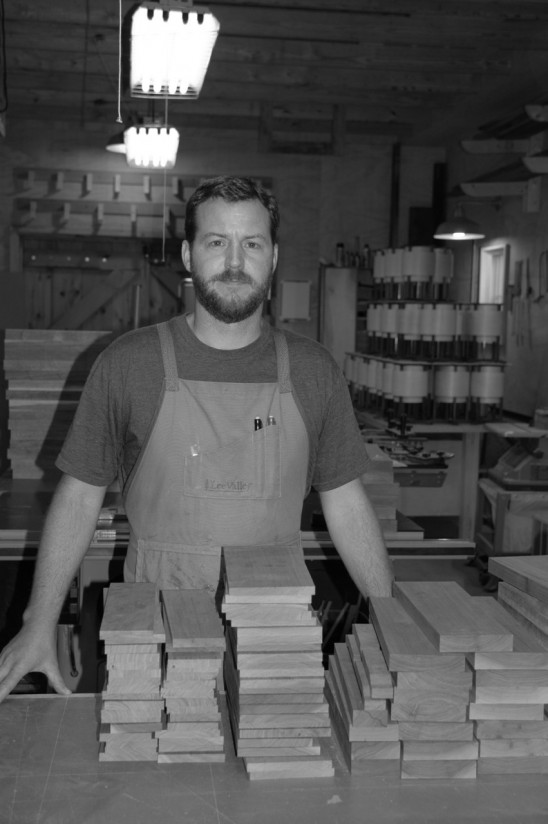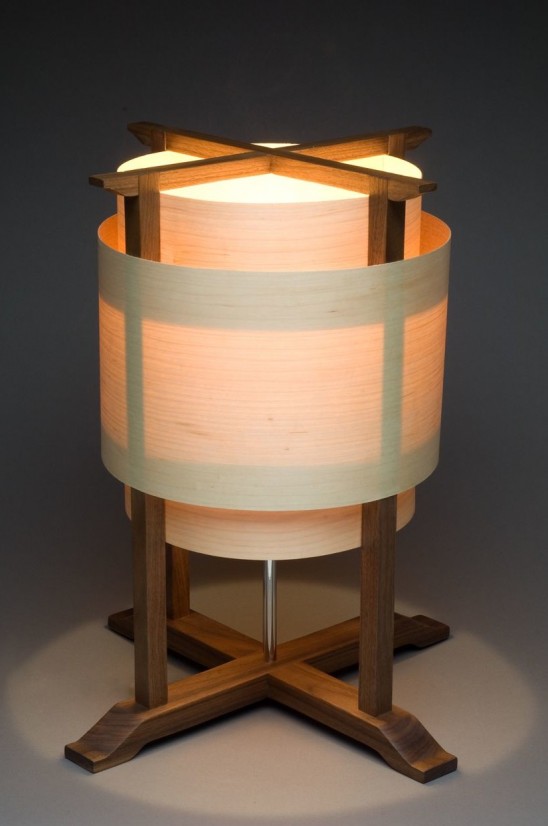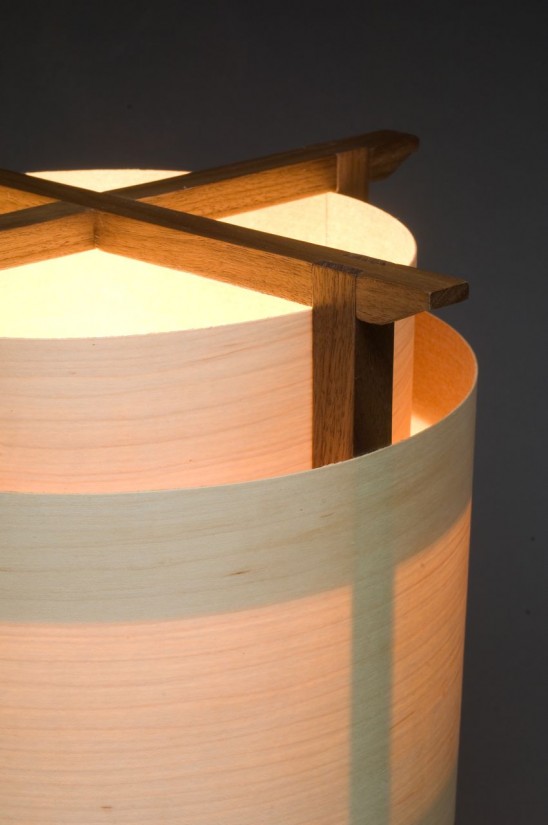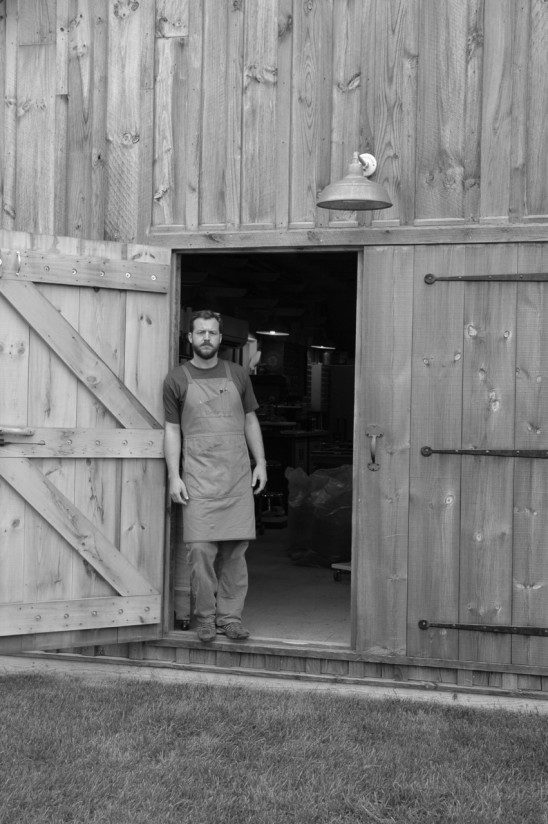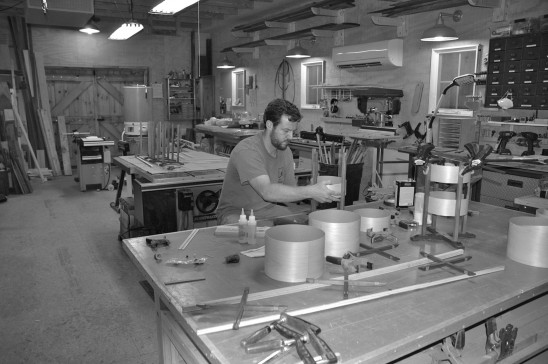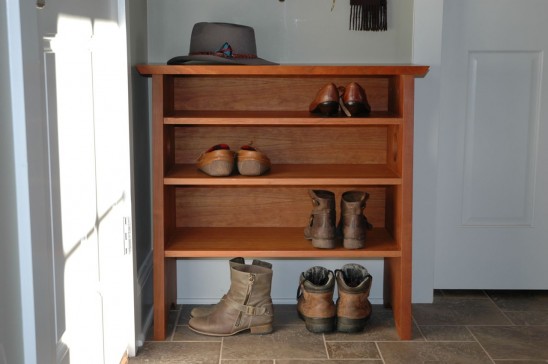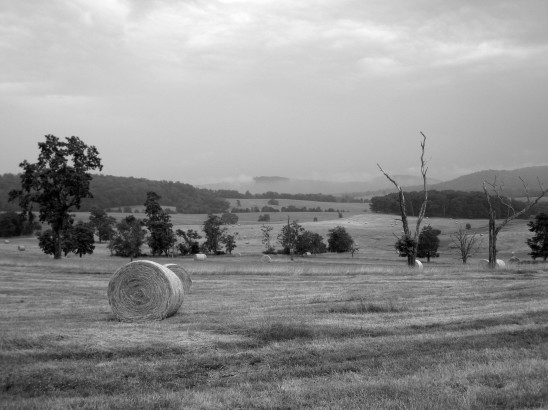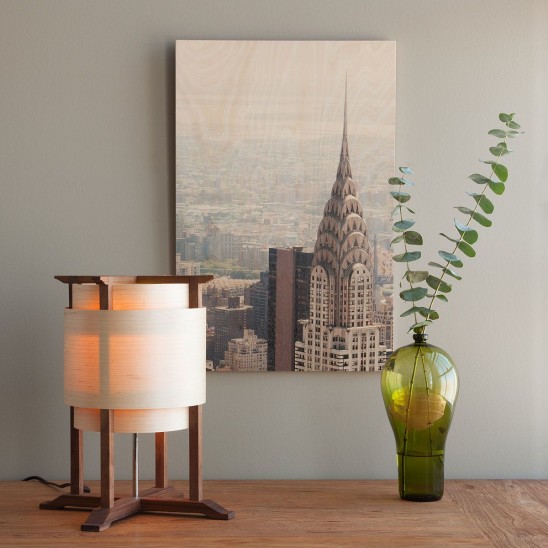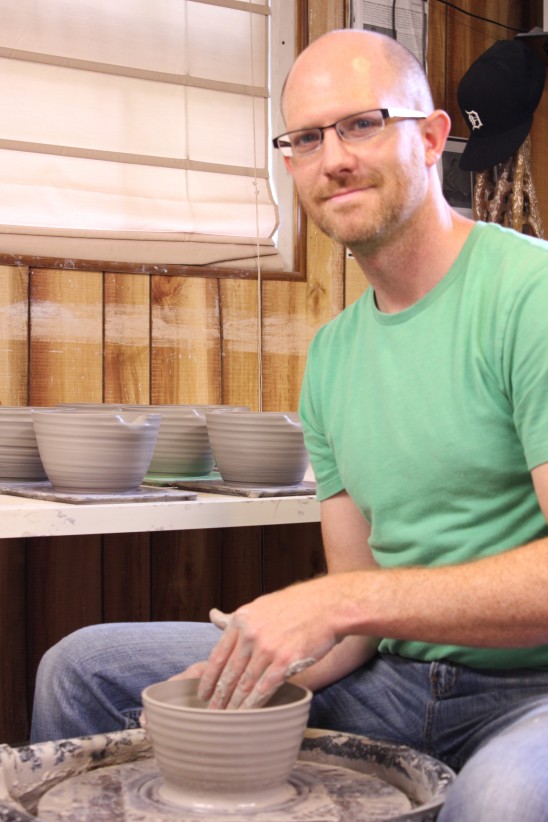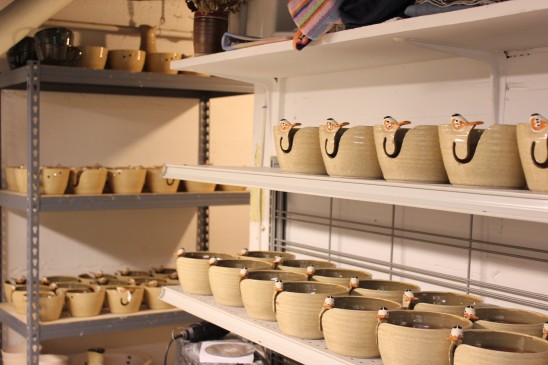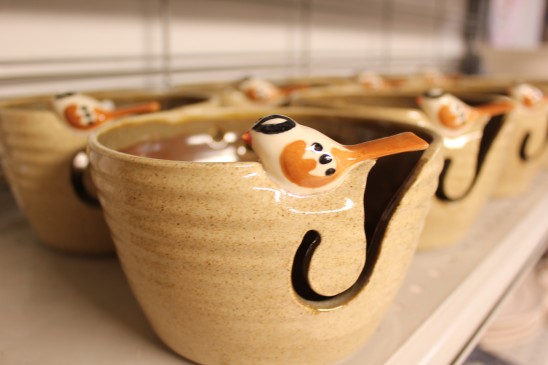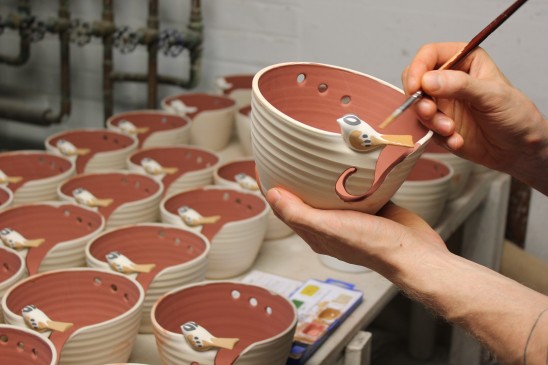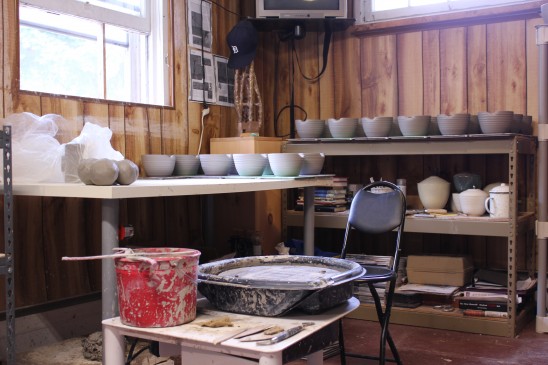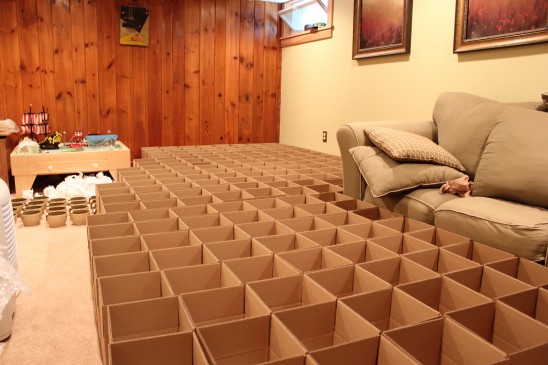I remember the first time that I watched a glass artist use a torch. I was sitting in a glassblowing demonstration at an art fair, surrounded by a big crowd waiting to witness what would happen when molten glass meets high heat. The crowd’s silence gave way to an entrancing performance. Watching the artist manipulate red and orange glass was like getting hypnotized by a campfire. I couldn’t imagine the patience and precision required to work hand-in-hand with an alluring, deadly element.
One glance at Heather Trimlett’s Spiro Earrings instantly takes me back to that day. I can tell that Heather’s ability to twist glass into a freely flowing pattern requires an eye for enchantment. As I got to know Heather during this interview, it doesn’t surprise me that she found her niche in jewelry making. Her personality is just as warm, friendly, and colorful as her beautiful pieces. Her color palette is a perfect match for our assortment! Meet Glass Design Challenge Winner Heather Trimlett, and learn about the process behind her winning design, her first experiences at the torch, and how she views the world in multicolored glasses.
How did you come up with the concept of your winning design?
For years I have played, practiced and experimented with carefully layering different colors of glass on top of each other and creating twists made of these different colors of glass. When I realized that adding a rod of clear glass to my twists would magnify the colors and allow them to appear to float freely in the clear glass, I had my magic. This combination of layering and precise twisting came together for the Spiro Earring design.
How did you celebrate when you found out that you won our Glass Design Challenge?
My first wave of euphoria came when I found out I had been accepted into the UncommonGoods Glass Challenge! I sent an email to all my clients, students and supporters, and asked them to please vote for my earrings! I was thrilled by their enthusiastic response.
Then I won, but couldn’t tell anyone! During the “period of secrecy,” I told a few close friends and toasted with a few glasses of wine. My insides were jumping up and down yelling “YEA!”
Once it was OK to tell, I sent an email to EVERYONE I knew to tell them I had won!
Can you tell us 3 fun, random facts about yourself?
1. I’m an avid gardener. Propagating my Staghorn ferns then sharing the babies with friends ranks high on the list of fun things about the garden. Spending all day Sunday in the garden is the definition of a perfect day for me. My fingers are perpetually crossed that one day my Proteas will decide to bloom. My newest venture is growing things we can actually eat.
2. I have become a collector of Lego figures. Probably the influence of a 4-year-old grandson. Or is it all those bright colors?
3. While I sit at my torch making beads, I watch bees drinking at my fountain. It’s amazing; there are hundreds of bees every day in the summer! The bees at the fountain, conversations with my students who are beekeepers and my concern for the declining bee population have led me to start studying beekeeping and trying to work up the courage to keep my own hives.
Describe your workspace.
I have two workspaces with garden views. The studio is my space for glass work and includes torches, tools, and all things related to fire. Living in southern California has allowed me to comfortably work “outside” in my garage for 20+ years. I like to say I park my car in my studio. From my torch, I have a beautiful view of my front garden.
My beautiful, bright new office is the second workspace. It’s done in my favorite color combo: lime and turquoise accented with black and white. A large glass door opens onto my garden at one end. I sort beads, make jewelry and take care of paperwork in this space.
Who or what are your design influences?
1. Color! This is the #1 driver for me. Sometimes I feel like a magpie chasing shiny things. I am constantly aware of the color around me, checking for combinations that might work well with my glass work. I love how bright colors can be in the California sunshine!
2. Order. I love orderly things, mechanical things, symmetry and repetition of line and shape. The fine mechanics and shine of a well-made tool truly inspires me.
Describe your first jewelry designing experience.
I was born to be a maker of things. I have always sewed, crocheted, built stained glass windows and many other things.
Playing with pop beads as a child was probably my first jewelry making experience. I still think they are a hoot and use them as design inspiration with my students.
Once I found flameworking (making beads at a torch), my career was set. I backed into jewelry making out of a need to do something with the plethora of beads I was making. My jewelry is simple and clean, as well as a nod to my love of symmetry and color. Clean, repetitive simple shapes are my favorite.
Can you walk us through the set by step process of creating the Spiro Earrings?
The first step in making my Lime Spiro earring is to make the twist that will be the spiral pattern within the earring. I start with one rod of clear glass and three rods of color. I heat the four rods and melt them together. The colors are placed around the clear like the stripes in toothpaste coming out of a tube. While the glass is molten, I carefully twist and stretch it out until it is about the diameter of a pencil and then let it cool. This is my twisted cane.
Next, I begin to create the bead itself. I heat a stainless steel mandrel and a rod of lime glass simultaneously. The size of the mandrel determines the size of the hole in my bead. I carefully wrap one layer of lime green glass around the mandrel as my base layer. Next, I heat the twisted cane gently and carefully, wrapping it around the lime green layer. Lastly, I apply a very thin layer of turquoise glass. I continue to head the bead gently to bring it to its final smooth shape.
I place each finished bead into the kiln to anneal (cool gradually) overnight. For me, the next morning is like Christmas when I open the kiln to see all that I accomplished the day before. I remove the beads from the mandrel, clean & polish them and then assemble them into the Lime Spiro earrings.
Are there any interesting future projects you would like to pursue?
When I am not on the road teaching or home making beads, my 10+ year goal is to learn battuto, an Italian glass engraving technique.
Creative people all have those days (or weeks!) when we feel lost, unmotivated, or stuck. How do you keep yourself inspired?
1. I am always charged up after teaching a class. My students give me energy, support and inspiration! Their questions create new puzzles for me to solve all the time!
2. Glass Bead Yoga. Production work gets me back into the groove. The repetition it requires is calming, feels good and safe, like an old friend. My mind has the space to settle down and regroup, ready for the next design idea.

